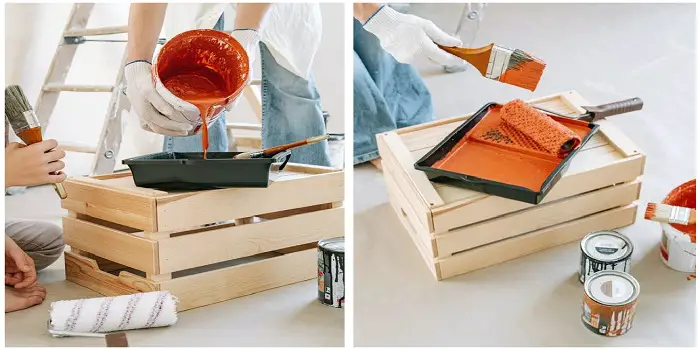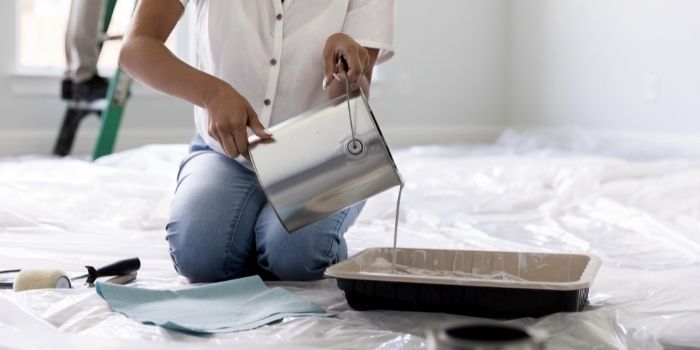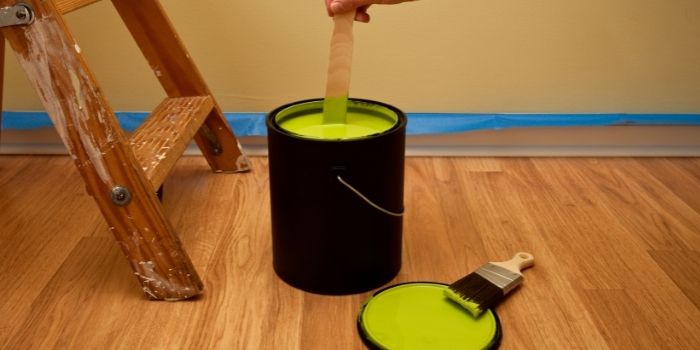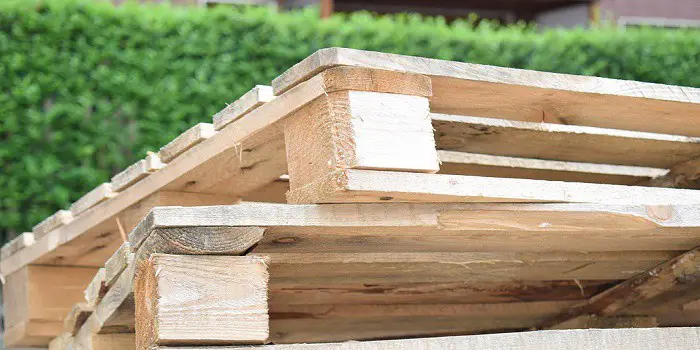
Wood stain and polyurethane can both be used to finish your wooden surfaces.
Many people prefer the glossier finish of polyurethane and many others the more natural look of the stain.
But simply because wood stains come in a limited number of colors and do not offer a glossy look, there are instances when you may want to expand your options by mixing the two products.
So, can you add a stain to polyurethane? Is it really feasible and can you do it without any damage?
Fortunately, the answer is yes. Stain and poly can be combined to help you get the shade you want. It not only provides better surface protection but also a faster application time.
Just be sure, that when you are mixing stains with polyurethane you are using the same bases – like an oil-based stain with only oil-based poly and vice versa.
And I think, this can help you much, particularly if you are trying to buy a specific stain color that is not available on the counter for some reason.
The information below will help you mix them properly, as combining them improperly may negatively impact your project.
How to Mix Stain with Polyurethane?
To successfully mix wood stain and polyurethane, do the following:
STEP 1. Prepare the stain
Before you do anything start by covering the area with plastic sheeting or a drop cloth.
Stir the stain in its container with a stirring stick – until the color is smooth and consistent throughout.
While doing so, you will need to mix all the pigments or colorants nicely that may be suspended in a solvent at the bottom of the container.
STEP 2. Stir the Poly
Then stir the polyurethane with a stirring stick the same way you have done with the stain. Make sure you do not stir it vigorously as it can form bubbles inside which can later cause finishing issues.
Also, because polyurethane produces dangerous fumes, you should always mix it outdoors or in a room with good ventilation.
STEP 3. Mix them together
Combine the wood stain and polyurethane by pouring equal portions of each product into a separate container.
While for most 50 percent stain to 50 percent polyurethane will do the job, if you want you can mix them in any other ratio depending on the color and consistency you need to achieve.
Remember, the stain is much thinner than poly. So the more stain you mix the thinner your mixture would likely be. And if you keep the poly ratio high the glossier finish you will achieve.
STEP 4. Stir the mixture nicely
Be sure to stir until the color is smooth and consistent throughout. If your container isn’t full, tip it to the side to make it easier to fully mix.
STEP 5. Cover and label the container
While labeling the mixture, you can use a small portion of the stain and polyurethane mixture to create a mark on the lid.
This mark will help you quickly determine the mixture’s color.
If you plan to store the solution for several days or weeks, you may need to stir it again before use.

What Kind of Stain You Can Mix with Poly?
There are three main types of wood stains that can be mixed with polyurethane using the method described above. They are oil stains, water-based stains, and gel stains.
a) Oil Stain
An oil stain is the most commonly used kind of wood stain. It is inexpensive and readily available. This type of stain is also fairly easy to mix with polyurethane because the linseed oil binder allows you to remove the excess stain before the mixture dries.
Sometimes a combination of linseed oil and varnish is used in oil stains. These ingredients require a lot of time to dry.
If you however need to remove an oil stain and polyurethane mixture, you’ll most likely need to use a solvent like paint thinner.
When mixing the two products, keep in mind that you do not ever mix oil-based stain with water-based polyurethane. If needed you can apply one over the other without mixing.
b) Water-Based Stain
These stains are loved for their decreased pollution. A water-based finish replaces the binder and water replaces the organic thinner.
The simpler ingredients in these stains are easier to deal with and cause less harm to the environment.
Compared to other types of stains, water-based stains are easy to clean up. Additionally, they do not cause irritation when they come into contact with the skin. Unlike other stains, this type of stain dries very vastly.
c) Gel Stain
Gel stains cannot be mixed with products like varnish, lacquer, or shellac. However, they can still be mixed with polyurethane.
There’s an easy trick to figure out if the finish used polyurethane or another product.
Dip a cotton ball in fingernail polish remover (only acetone removers will work) and dab it on the finish.
If the cotton ball sticks to the finish, it is varnish, shellac, or lacquer. If it doesn’t stick, it’s polyurethane.
If you determine a stained surface used varnish, lacquer, or shellac, you cannot add gel stain to the surface.
However, gel stain will work fine on surfaces with a polyurethane finish.

What Kind of Polyurethane You Can Mix with Stain?
Polyurethane is a plastic-like compound in liquid form. When it dries, it provides a clear glossy finish.
You can purchase either water-based or oil-based polyurethane in a variety of finishes. Whether you want a satin finish or a glossy finish, there’s a polyurethane to fit your needs.
a) Water-Based Polyurethane
This type of polyurethane is more popular because it doesn’t have a strong odor and contains fewer toxins. It can also be easily mixed with wood stains to create a variety of finish colors.
Oil-based polyurethanes are slightly tinted, while water-based polyurethanes are clear on wood surfaces. They also dry much faster than oil-based polyurethanes.
Because water-based polyurethane doesn’t hold up against heat or chemicals, it’s best for surfaces that won’t be exposed to extreme conditions. Use this type for bookcases, side tables, desks, dressers, and picture frames.
Unfortunately, water-based polyurethane isn’t as durable as oil-based. It can be cleaned off a surface with water and soap. With its lower odor and fewer toxins, a well-ventilated is not necessary.
b) Oil-Based Polyurethane
Unlike water-based polyurethane, oil-based polyurethane needs to be used outdoors or in a well-ventilated area. Their toxic fumes can be dangerous in small spaces without proper ventilation.
The biggest benefit of oil-based polyurethane is its durability. Because it is both durable and versatile, it can be easily mixed with oil-based wood stain to achieve the perfect finish.
Can You Stain the Wood That Already Has Old Polyurethane?
While applying a clear coat of polyurethane after staining can provide long-term protection to the wood from scratches and damages, vice versa is not a common practice and you should avoid doing this.
If, however, for some reason you want to change the color of the wood after applying polyurethane, you can do it by applying a gel stain over polyurethane.
Gel stain will not penetrate like a stain and won’t be able to give you the same grain pattern, but can help to change the color without the need of stripping the polyurethane.
Gel stain is basically a product that contains urethane, which is also the primary ingredient in polyurethane. So, it adheres to the existing polyurethane and will serve the purpose.
Also, keep in mind that gel stain will only work when applied over polyurethane and not over varnish, lacquer, or shellac.
So, if you are not sure about the old finish on your wood surface, you better test it to make sure it’s polyurethane and nothing else.
- Take a cotton ball dipped in acetone (fingernail polish remover)
- Dab it lightly on the finished layer
- If the cotton ball does not stick to – its polyurethane
- If it sticks to the finish, its most likely varnish, lacquer, or shellac
Final Thoughts
Recently homeowners and woodworking enthusiasts have been turning to a mixture of one-step stain and polyurethane to achieve a unique finish. Because the mixture is quick to create, the demand for stain and polyurethane mixes has increased.
Sometimes people feel stifled by the lack of options available for wood stains. To get the perfect shade, people are using a combination of stain and polyurethane.
If you are also struggling with such a dilemma, why not try the above steps to get the problem solved quickly?

Hi, I am Mark Garner a professional carpenter, woodworker, and DIY painter. I live in the small city of Peoria, Arizona as a semi-retired woodworker. I have started this blog with a simple motive to help you with my wood experience in this sector. If you like to know more about what I love doing and how it all got started, you can check more about me here.




